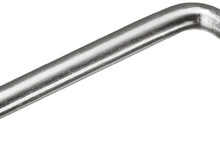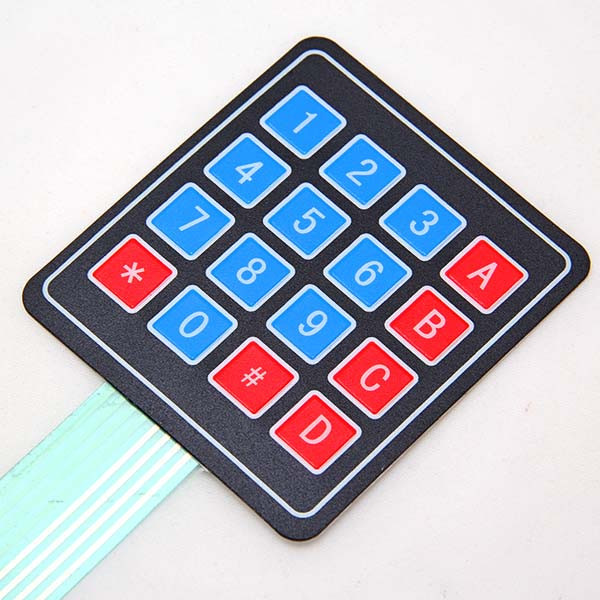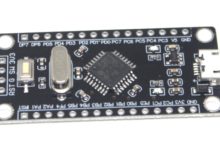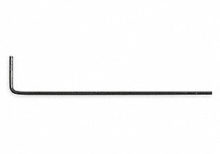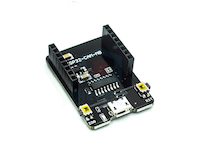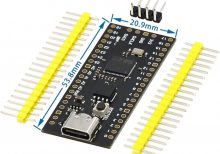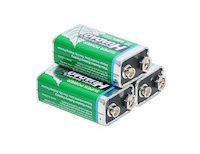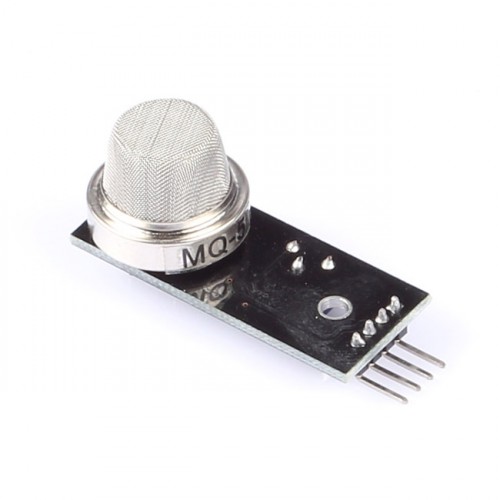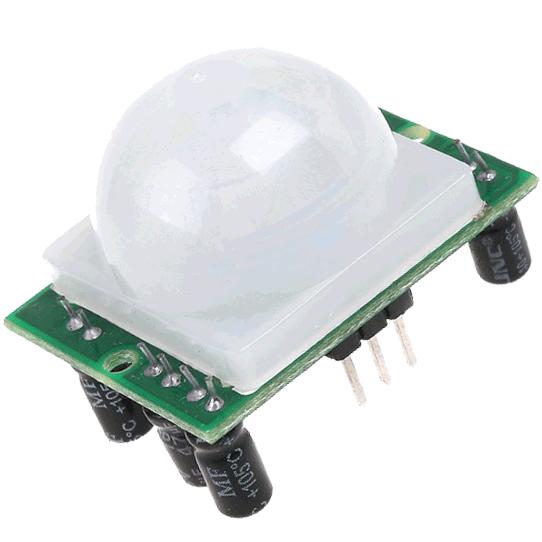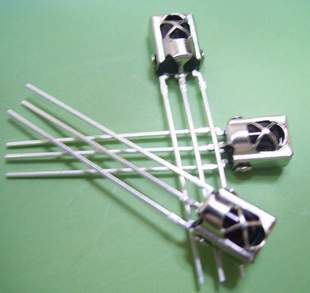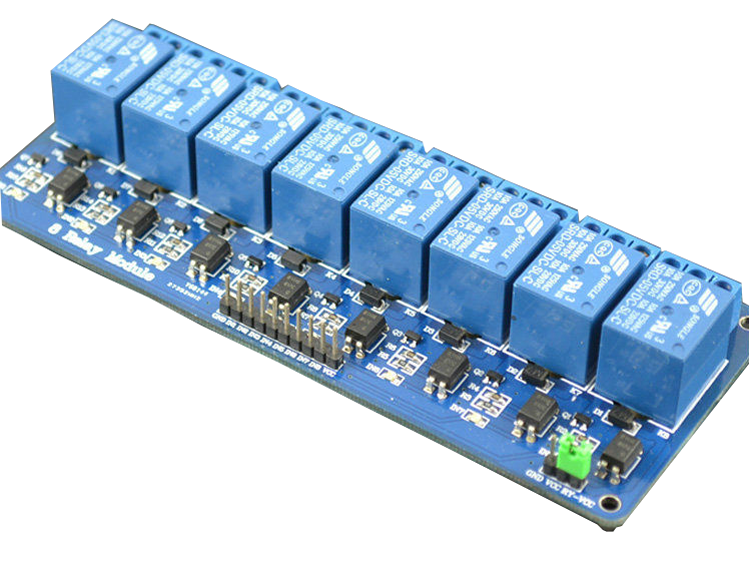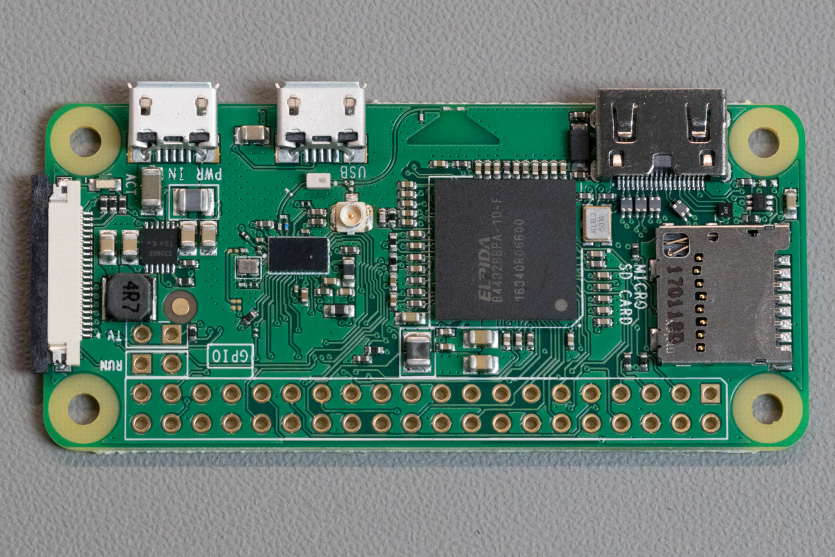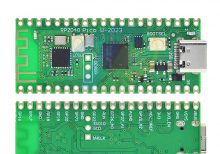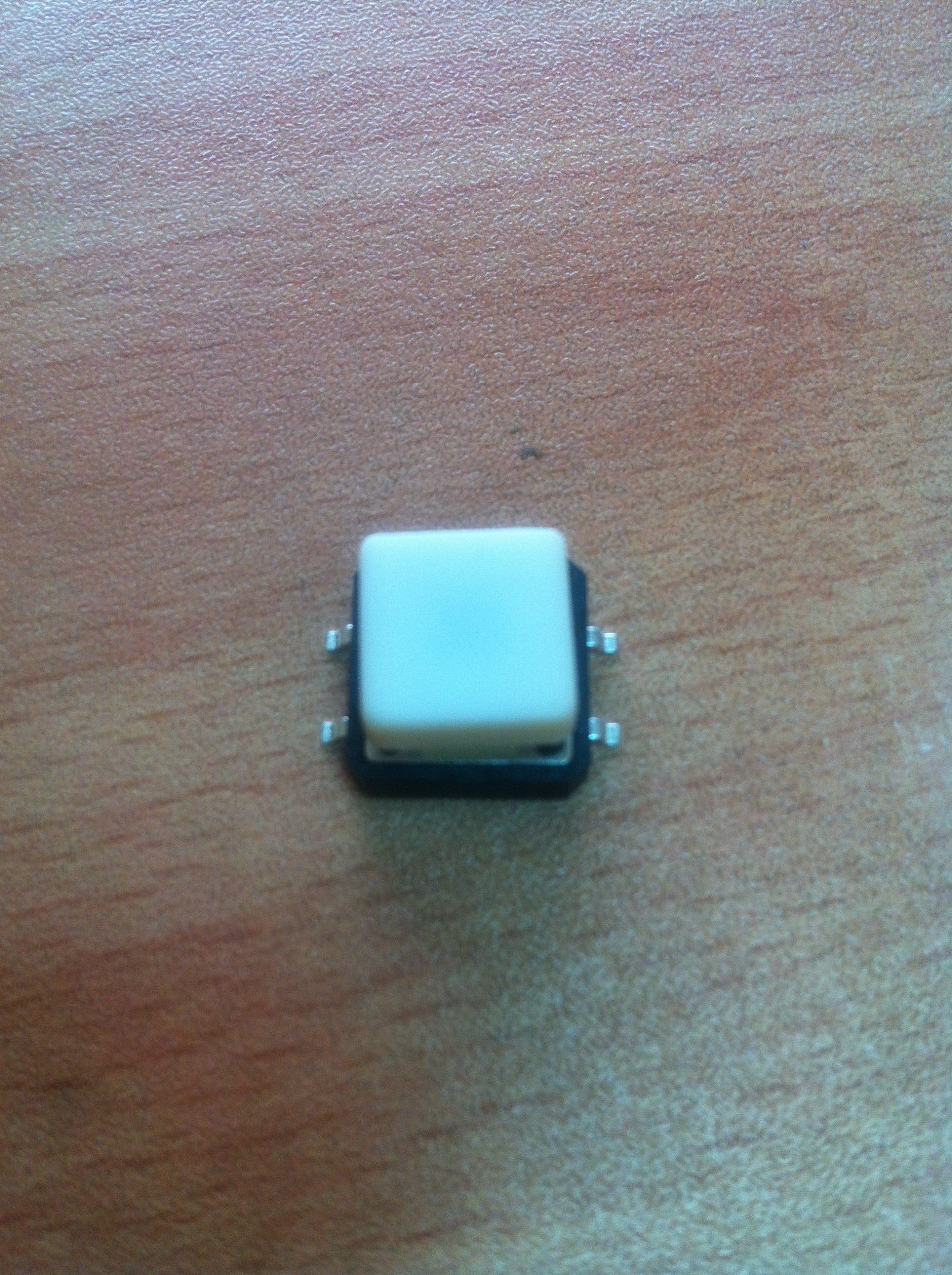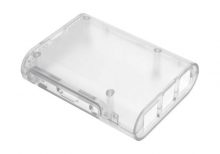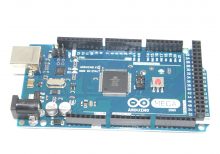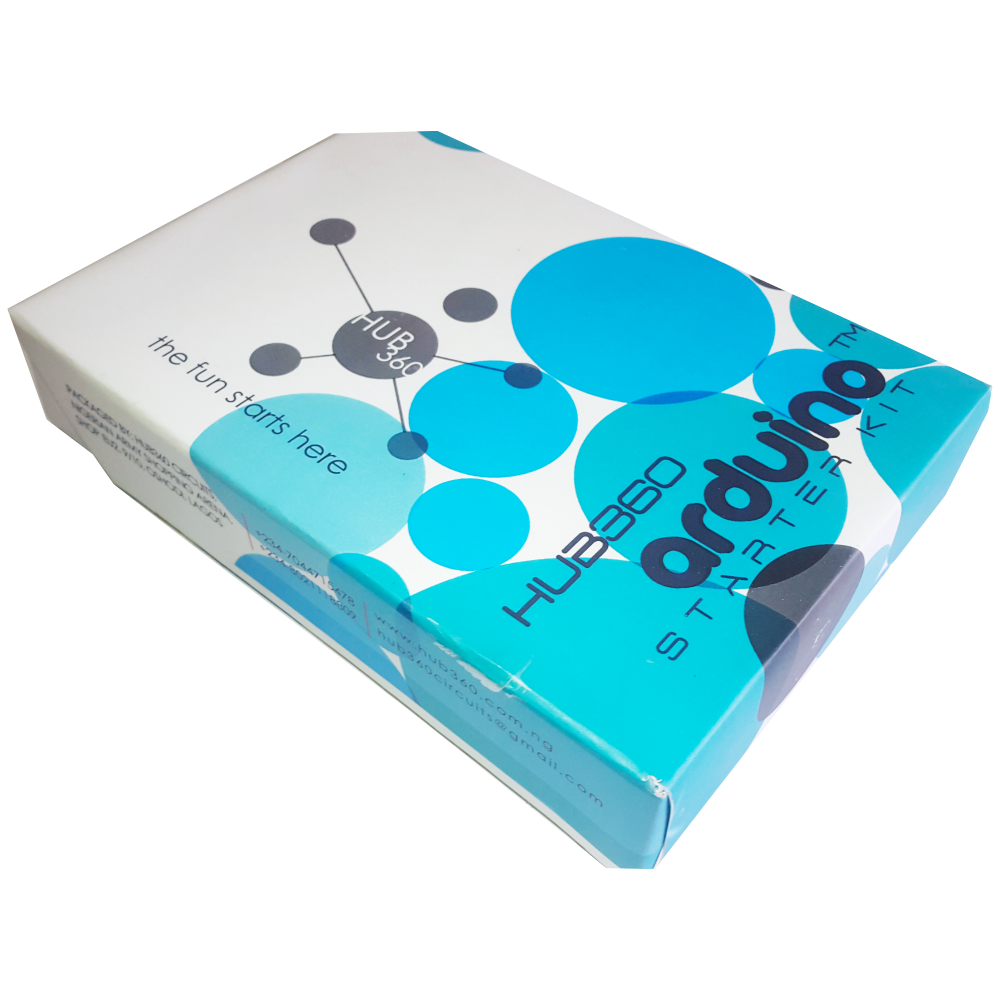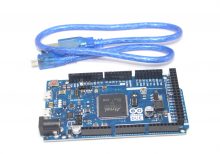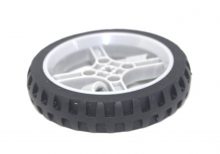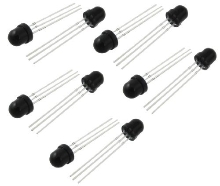|
Description |
The Allen key, also known as a hex key or hex wrench, is a small hand tool used to drive screws and bolts with hexagonal sockets. The Size 4 mm Allen key is designed to fit fasteners with a 4 mm hexagonal socket. This tool is commonly used in various mechanical, electrical, and DIY applications.
Key Features:
- Size: 4 mm (hexagonal socket size)
- Shape: L-shaped or T-shaped
- Material: Typically made from steel or chrome vanadium for durability and strength
- Finish: Often coated with black oxide or chrome plating for corrosion resistance
- Type: Can come in various designs such as short or long arm, ball-end, or standard
Technical Specifications:
- Hexagon Size: 4 mm
- Length: Varies depending on design (e.g., 60 mm to 150 mm for short arm, longer for T-handle or L-handle)
- Material: Steel, chrome vanadium, or other hardened materials
- Finish: Black oxide, chrome-plated, or other protective coatings
Applications:
- Mechanical Work: Used in automotive repair, machinery assembly, and other mechanical tasks.
- Furniture Assembly: Commonly used for assembling flat-pack furniture.
- Bicycles: Used for adjusting and tightening components on bicycles.
- Electronics: Helpful in assembling and repairing electronic devices with hex screws.
- DIY Projects: Essential for various home improvement and hobbyist tasks.
Datasheet:
Typically, Allen keys do not have detailed datasheets, but specifications can be obtained from this datasheet.
|
The 4×4 Matrix Keypad is a user-friendly input device consisting of 16 keys arranged in a 4×4 matrix. It is widely used in embedded systems, microcontroller projects, and DIY electronics for user input. Each key press is detected by scanning the matrix, allowing for efficient and reliable data entry. The keypad is compact, durable, and easy to integrate into various projects.
Key Features:
- Key Configuration: 4 rows and 4 columns, totaling 16 keys
- Interface: Matrix scanning
- Key Labels: Numeric and function keys (0-9, A-D, *, #)
- Compact Design: Suitable for handheld devices and small projects
- Durable: Made from high-quality materials for long-lasting use
- Flexible: Can be connected to any microcontroller or development board
- Low Power Consumption: Efficient operation with minimal power usage
Technical Specifications:
- Number of Keys: 16 (4×4 matrix)
- Operating Voltage: 3.3V to 5V
- Current Consumption: < 10mA
- Contact Resistance: ≤ 200 ohms
- Insulation Resistance: ≥ 100M ohms (at 250V DC)
- Operating Temperature Range: -20°C to +60°C
- Keypad Dimensions: 69mm x 69mm x 1.8mm
- Connection Type: 8-pin header
Applications:
- Embedded Systems: User input for microcontroller-based projects.
- DIY Electronics: Ideal for hobbyists and makers creating custom projects.
- Access Control: Use in security systems for code entry.
- Consumer Electronics: Keypad input for appliances and gadgets.
- Educational Projects: Commonly used in educational kits and learning modules.
Usage:
- Wiring: Connect the 8-pin header to the microcontroller or development board, ensuring correct row and column connections.
- Programming: Use libraries (e.g., Keypad library for Arduino) to read key presses and handle input.
- Integration: Incorporate the keypad into your project for reliable user input.
- Testing: Verify the functionality by pressing keys and checking the output.
Caution:
- Proper Connection: Ensure the keypad is connected correctly to avoid malfunction.
- Voltage Levels: Operate within the specified voltage range to prevent damage.
Datasheet:
For detailed technical specifications, refer to the 4×4 Matrix Keypad Datasheet.
|
The Allen key, also known as a hex key or hex wrench, is a tool used to drive screws and bolts with hexagonal sockets. The Size 3 mm Allen key is designed for fasteners with a 3 mm hexagonal socket, making it suitable for various applications in mechanical, electrical, and DIY projects.
Key Features:
- Size: 3 mm (hexagonal socket size)
- Shape: Typically L-shaped or T-shaped
- Material: Often made from high-strength steel or chrome vanadium for durability and longevity
- Finish: Commonly coated with black oxide, chrome plating, or other protective finishes to resist corrosion
- Type: Available in different designs, such as short or long arm, and sometimes with a ball end for ease of use in tight spaces
Technical Specifications:
- Hexagon Size: 3 mm
- Length: Varies by design, e.g., 50 mm to 120 mm for short arms, and longer for T-handle or L-handle versions
- Material: Steel, chrome vanadium, or other hardened materials
- Finish: Black oxide, chrome-plated, or other protective coatings
Applications:
- Mechanical Work: Ideal for tasks involving screws and bolts in machinery and automotive applications.
- Furniture Assembly: Commonly used for assembling flat-pack furniture.
- Bicycles: Useful for adjusting and tightening components on bicycles.
- Electronics: Essential for assembling and repairing electronic devices with hex screws.
- DIY Projects: Suitable for various home improvement and hobbyist tasks.
Datasheet:
Allen keys generally do not have detailed datasheets, but tool manufacturers or suppliers can provide specifications.
|
The STM8S Development Board is a comprehensive platform designed for developing and prototyping with the STM8S series microcontrollers. It provides a robust set of features and peripherals to facilitate a wide range of applications, from simple embedded projects to complex industrial control systems. The board offers easy access to all the microcontroller’s functionalities and includes a variety of interfaces and connectors to enhance development efficiency.
Key Features:
- Microcontroller: Based on the STM8S series microcontroller.
- Peripheral Interfaces: Multiple GPIOs, UART, I2C, SPI, and ADC/DAC interfaces.
- Power Supply Options: Supports multiple power supply options, including USB and external sources.
- On-Board Debugging: Integrated SWIM interface for debugging and programming.
- Expandable: Pin headers for easy expansion with additional modules and shields.
- User-Friendly Design: Includes user LEDs, push buttons, and a reset button for easy development and testing.
- Software Support: Compatible with various IDEs and development tools, including STM8S firmware libraries.
Technical Specifications:
- Microcontroller: STM8S series
- Operating Voltage: 3.3V to 5V
- Communication Interfaces: UART, I2C, SPI
- Analog Inputs: Multiple ADC channels
- Digital I/O: Multiple GPIO pins
- Clock Speed: Up to 16MHz
- Memory: Flash, RAM, and EEPROM (varies by specific STM8S model)
- Dimensions: Compact and portable design
Applications:
- Embedded Systems: Ideal for developing and prototyping embedded systems.
- Industrial Control: Suitable for industrial automation and control applications.
- Education and Training: Perfect for educational purposes and hands-on learning.
- Home Automation: Can be used in home automation projects.
- Consumer Electronics: Applicable in various consumer electronic devices.
Datasheet:
For detailed technical specifications, refer to the STM8S Development Board Datasheet.
|
The Allen key, also known as a hex key or hex wrench, is a tool designed for driving screws and bolts with hexagonal sockets. The Size 1.5 mm Allen key is specifically used for fasteners with a 1.5 mm hexagonal socket. This is one of the smallest Allen keys available and is typically used in precision applications where very small fasteners are required.
Key Features:
- Size: 1.5 mm (hexagonal socket size)
- Shape: Commonly L-shaped or T-shaped
- Material: Often made from high-quality steel or chrome vanadium for strength and durability
- Finish: Typically coated with black oxide, chrome plating, or other protective finishes to resist corrosion
- Type: Available in various designs including short or long arm, and sometimes with a ball end for ease of use in tight spaces
Technical Specifications:
- Hexagon Size: 1.5 mm
- Length: Varies by design, usually ranging from 30 mm to 80 mm for short arms, and longer for T-handle or L-handle versions
- Material: Steel, chrome vanadium, or other hardened materials
- Finish: Black oxide, chrome-plated, or other protective coatings
Applications:
- Precision Work: Ideal for tasks involving very small screws and bolts, such as in electronics and small machinery.
- Model Building: Commonly used in assembling and repairing model kits where very small fasteners are used.
- Bicycles: Useful for adjusting components on bicycles that require a small hex size.
- Electronics: Essential for assembling and servicing electronic devices with tiny hex screws.
- Jewelry Making: Used in precision applications where very small screws are common.
Datasheet:
Allen keys generally do not have detailed datasheets, but tool manufacturers or suppliers can provide specifications.
|
The Raspberry Pi 3.5 Inches Resistive Touch Screen is a compact display module designed specifically for use with Raspberry Pi boards. This touch screen offers a user-friendly interface for various applications, allowing you to interact directly with your Raspberry Pi projects. It features a resistive touch panel, making it suitable for applications that require precise touch input.
Key Features:
- Screen Size: 3.5 inches
- Display Type: TFT LCD
- Resolution: 320 x 480 pixels
- Touch Type: Resistive touch panel
- Interface: SPI (Serial Peripheral Interface)
- Compatibility: Compatible with Raspberry Pi models such as Raspberry Pi 4, 3, 2, and Zero
Technical Specifications:
- Screen Size: 3.5 inches
- Display Resolution: 320 x 480 pixels
- Touch Panel: Resistive
- Interface: SPI
- Operating Voltage: 3.3V/5V (powered through Raspberry Pi GPIO)
- Dimensions: Approximately 85mm x 55mm x 30mm
- Viewing Angle: Wide viewing angle
- Backlight: LED backlight for enhanced visibility
Applications:
- Portable Raspberry Pi projects
- DIY handheld devices
- Control interfaces for home automation
- Interactive displays for education and prototyping
- Gaming consoles and entertainment systems
Usage:
- Connect the 3.5-inch touch screen to the GPIO pins of your Raspberry Pi board.
- Install the necessary drivers and configure the Raspberry Pi for the touch screen.
- Calibrate the touch panel if required to ensure accurate touch input.
- Use the touch screen to interact with your Raspberry Pi applications, projects, or operating system.
Caution:
- Handle the touch screen carefully to avoid damaging the display or touch panel.
- Ensure the GPIO pins are correctly connected to avoid short circuits or incorrect operation.
- Follow the manufacturer’s guidelines for driver installation and configuration.
Datasheet:
For detailed technical specifications, refer to the Raspberry Pi 3.5 Inches Resistive Touch Screen Datasheet.
|
The Raspberry Pi 3 Model A+ is a compact and cost-effective variant of the Raspberry Pi 3 series, designed to deliver high performance in a smaller form factor. It retains many of the features of the Raspberry Pi 3 Model B+ but in a more compact size, making it ideal for projects where space and cost are critical considerations. With its quad-core processor and integrated wireless connectivity, the Raspberry Pi 3 Model A+ is perfect for a wide range of applications, from IoT projects to DIY electronics and educational purposes.
Key Features:
- Quad-Core Processor: 1.4 GHz 64-bit quad-core ARM Cortex-A53 CPU for powerful performance.
- Wireless Connectivity: Integrated 2.4GHz and 5GHz IEEE 802.11.b/g/n/ac Wi-Fi and Bluetooth 4.2/BLE.
- Memory: 512MB LPDDR2 SDRAM.
- Compact Form Factor: Smaller size compared to the Raspberry Pi 3 Model B+, making it ideal for space-constrained projects.
- USB Port: One USB 2.0 port for connecting peripherals.
- HDMI Output: Full-size HDMI port for high-definition video output.
- Audio: 3.5mm audio jack and HDMI audio output.
- GPIO Pins: 40-pin GPIO header, compatible with Raspberry Pi HATs and add-on boards.
- Camera and Display Interfaces: CSI camera port for connecting a Raspberry Pi camera and DSI display port for connecting a Raspberry Pi touchscreen display.
- Micro SD Slot: For storage and operating system, located on the bottom of the board.
Technical Specifications:
- Processor: Broadcom BCM2837B0, Cortex-A53 (ARMv8) 64-bit SoC @ 1.4 GHz
- Memory: 512MB LPDDR2 SDRAM
- Wireless: 2.4GHz and 5GHz IEEE 802.11.b/g/n/ac Wi-Fi, Bluetooth 4.2, BLE
- USB Ports: 1 x USB 2.0
- Video & Audio Output: HDMI, composite video (via 3.5mm jack), and stereo audio
- GPIO: 40-pin header with 28 GPIO pins, 3.3V, 5V, ground, and various communication protocols (UART, I2C, SPI)
- Power: 5V/2.5A DC via micro-USB connector
- Dimensions: 65mm x 56.5mm x 15mm
- Weight: 29g
Applications:
- IoT Projects: Suitable for various Internet of Things applications.
- DIY Electronics: Ideal for hobbyist and maker projects.
- Educational Use: Perfect for learning programming, electronics, and computer science.
- Media Centers: Can be used as a media center with software like Kodi.
- Embedded Projects: Suitable for embedding into other projects due to its compact size.
- Home Automation: Useful for creating smart home applications.
Datasheet:
For detailed technical specifications, refer to the Raspberry Pi 3 Model A+ Datasheet.
|
The ESP32-CAM MB is a download board specifically designed for the ESP32-CAM module, facilitating easy programming and development. It integrates a USB-to-serial converter, enabling straightforward connection to a PC for programming and debugging. This board is essential for anyone working with the ESP32-CAM, simplifying the process of uploading sketches and interfacing with the ESP32-CAM’s capabilities, such as Wi-Fi, Bluetooth, and camera functionalities.
Key Features:
- Compatibility: Designed for ESP32-CAM module
- USB-to-Serial Converter: Integrated for easy programming
- Connector Type: Micro-USB
- Simple Connection: No need for external power supply during programming
- On-board Reset and Program Buttons: For easy control and operation
- Compact Design: Small form factor for convenience and portability
Technical Specifications:
- Microcontroller: Supports ESP32-CAM module
- USB Interface: Micro-USB for power and programming
- Operating Voltage: 5V from USB
- Communication Interface: UART (TX/RX)
- Dimensions: Approx. 30mm x 25mm x 10mm
- Weight: 5 g
- Indicators: Power and status LEDs
Applications:
- Programming and Debugging: Simplifies the process of programming the ESP32-CAM module.
- Prototyping: Ideal for developing and testing applications using the ESP32-CAM.
- Educational Projects: Suitable for teaching and learning IoT and embedded systems development.
- Camera Projects: Facilitates the development of camera-based projects using the ESP32-CAM.
|
|
The 9V battery is a compact, rectangular-shaped battery commonly used in various electronic devices and household applications. Known for its reliability and long shelf life, the 9V battery provides a steady voltage output, making it ideal for devices that require a stable power source. It is widely used in smoke detectors, multimeters, transistor radios, and other portable electronic devices.
Key Features:
- Type: 9V battery
- Voltage: 9 volts
- Capacity: Varies by manufacturer (typically between 500mAh to 1200mAh)
- Shelf Life: Up to 5 years
- Size: Standard 9V (rectangular with snap connectors)
- Reliable Performance: Consistent and stable power output
- Leak-resistant: Designed to prevent leakage and protect devices
Technical Specifications:
- Voltage: 9V
- Capacity: Typically between 500mAh to 1200mAh
- Dimensions: 48.5mm x 26.5mm x 17.5mm
- Weight: Approximately 45g
- Terminal Type: Snap connector
- Chemistry: Available in Alkaline, Lithium, or Rechargeable NiMH
- Operating Temperature Range: -20°C to +54°C
Applications:
- Smoke Detectors: Reliable power source for safety devices.
- Multimeters: Provides consistent voltage for accurate measurements.
- Transistor Radios: Powers portable radios for extended periods.
- Portable Electronic Devices: Suitable for various battery-operated devices.
- Toys: Used in electronic toys and gadgets.
Usage:
- Installation: Insert the 9V battery into the device, ensuring correct polarity alignment.
- Replacement: Replace the battery when the device indicates low power or performance drops.
- Storage: Store batteries in a cool, dry place to maximize shelf life.
Caution:
- Proper Disposal: Follow local regulations for battery disposal.
- Avoid Short-circuiting: Do not connect terminals directly, as it may cause overheating or leakage.
- Do Not Recharge: Non-rechargeable 9V batteries should not be recharged.
Datasheet:
For detailed technical specifications, refer to the 9V Battery Datasheet.
|
The MQ5 Methane and Natural Gas Sensor Module is a gas sensor designed for detecting methane, natural gas, and LPG concentrations in the air. It is widely used in gas leakage detection equipment, home safety devices, and various industrial applications. The module provides a quick and accurate response to gas presence, making it ideal for safety and environmental monitoring.
Key Features:
- High Sensitivity: Detects methane, natural gas, and LPG with high accuracy.
- Fast Response Time: Quickly responds to changes in gas concentration.
- Long Life: Durable sensor with a long operational life.
- Analog Output: Provides an analog voltage output proportional to the gas concentration.
- Digital Output: Includes a digital output for threshold-based gas detection.
- Easy Integration: Simple to integrate into various electronic circuits and systems.
Technical Specifications:
- Gas Detection: Methane, Natural Gas, LPG
- Detection Range: 200 ppm to 10000 ppm (parts per million)
- Operating Voltage: 5V DC
- Power Consumption: ≤ 800 mW
- Preheat Time: ≤ 20 seconds
- Analog Output: 0-5V
- Digital Output: High/Low signal
- Operating Temperature Range: -20°C to +50°C
- Humidity Range: 95% RH
- Dimensions: 32mm x 22mm x 27mm (L x W x H)
Applications:
- Gas Leakage Detectors: Used in home and industrial gas leakage detection systems.
- Environmental Monitoring: Monitors air quality and gas concentrations in various environments.
- Safety Systems: Integrated into safety systems for gas detection and alarm triggers.
- Industrial Equipment: Used in industrial applications for gas concentration monitoring.
- DIY Projects: Suitable for hobbyist and educational electronics projects.
Usage:
- Connection: Connect the module to a 5V power supply and interface the analog or digital output to a microcontroller or monitoring system.
- Calibration: Allow the sensor to preheat for the specified time to ensure accurate readings.
- Monitoring: Continuously monitor the analog output for gas concentration levels or use the digital output for threshold-based detection.
- Integration: Integrate the sensor module into your final application, ensuring proper placement for gas detection.
Caution:
- Preheating: Ensure the sensor is preheated before use for accurate detection.
- Voltage Supply: Use the specified voltage to avoid damaging the sensor.
- Environmental Conditions: Operate the sensor within the recommended temperature and humidity ranges.
Datasheet:
For detailed technical specifications, refer to the MQ5 Methane, Natural Gas Sensor Module Datasheet.
|
The PIR (Passive Infrared) Motion Sensor is a reliable and efficient sensor used to detect motion by measuring changes in infrared radiation levels emitted by surrounding objects. It is widely used in security systems, automatic lighting controls, and other applications requiring motion detection. The sensor is designed to detect human movement and can trigger alarms, lights, or other systems in response to detected motion.
Key Features:
- Type: Passive Infrared (PIR) motion sensor
- Detection Range: Up to 7 meters
- Detection Angle: 120 degrees
- Output: Digital high/low signal
- Operating Voltage: 5V to 20V
- Adjustable Sensitivity: Allows customization of detection range
- Adjustable Time Delay: Configurable delay before resetting
- Compact Design: Small and easy to integrate into various systems
Technical Specifications:
- Operating Voltage: 5V to 20V
- Current Consumption: < 60µA
- Output Type: Digital (high/low)
- Detection Range: Up to 7 meters
- Detection Angle: 120 degrees
- Trigger Time: Adjustable from 5 seconds to 5 minutes
- Operating Temperature Range: -20°C to +50°C
- Dimensions: 32mm x 24mm
Applications:
- Security Systems: Use in burglar alarms and surveillance systems.
- Automatic Lighting: Control lights in homes, offices, and public spaces.
- Energy Saving: Automate lighting and devices to save energy.
- Consumer Electronics: Motion-activated gadgets and appliances.
- Industrial Automation: Detect movement in industrial processes and machinery.
Usage:
- Installation: Mount the PIR sensor at the desired location, ensuring a clear line of sight for detection.
- Power Supply: Connect the sensor to a power source within the operating voltage range.
- Output Connection: Connect the output pin to the desired control circuit or microcontroller.
- Adjustment: Use the sensitivity and time delay adjustments to fine-tune the sensor’s performance.
Caution:
- Environmental Factors: Avoid placing the sensor near heat sources or in direct sunlight to prevent false triggering.
- Proper Wiring: Ensure correct wiring to avoid damage to the sensor and connected devices.
Datasheet:
For detailed technical specifications, refer to the PIR Motion Sensor Datasheet.
|
The TSOP 1838 is a compact IR (Infrared) receiver module designed for use in remote control systems. It can detect modulated IR signals at 38 kHz, making it ideal for applications such as remote control reception, IR data transmission, and IR-based communication systems. The TSOP 1838 provides high sensitivity and reliable performance in a small package.
Key Features:
- Pin diode and preamplifier in one package
- Modulated IR signal detection at 38 kHz
- High sensitivity and excellent noise immunity
- Low power consumption
- TTL and CMOS compatible output
- Internal filter for PCM frequency
- Improved shielding against electrical field disturbance
- Suitable for continuous and burst data transmission
Technical Specifications:
- Carrier Frequency: 38 kHz
- Supply Voltage: 2.7V to 5.5V
- Supply Current: 0.4 mA (typical)
- Peak Wavelength: 940 nm
- Reception Range: Up to 45 meters (with proper IR transmitter)
- Viewing Angle: ±45 degrees
- High-Level Output Voltage: ≥ Vcc – 0.2V
- Low-Level Output Voltage: ≤ 0.2V
- Output Pulse Width: Typically 400 µs
- Operating Temperature Range: -25°C to +85°C
- Package Type: 3-pin epoxy package
Applications:
- IR remote control systems
- Consumer electronics (TVs, VCRs, DVDs, audio equipment)
- Home automation
- IR data communication
- Infrared object detection
- Robotics
Usage:
- Connection:
- Connect the Vcc pin to a power supply (2.7V to 5.5V).
- Connect the GND pin to ground.
- Connect the OUT pin to the input of a microcontroller or other logic-level input device.
- Operation:
- When an IR signal at 38 kHz is received, the OUT pin goes low.
- When no IR signal is received, the OUT pin stays high.
- Use the output signal to control devices or process the data using a microcontroller.
- Interfacing:
- Interface the TSOP 1838 with a microcontroller to decode the received IR signals.
- Implement software to process the decoded IR signals for controlling various devices.
Caution:
- Ensure the IR receiver is not exposed to direct sunlight or strong ambient light sources, as this may affect its performance.
- Handle the module with care to avoid damage from electrostatic discharge (ESD).
Datasheet:
For detailed technical specifications, refer to the TSOP 1838 Datasheet.
|
The T Plug Pair, also known as Deans connectors, is a set of high-current connectors commonly used in RC models, batteries, and other electronic applications requiring reliable and secure power connections. These connectors are known for their low resistance, high current carrying capacity, and easy-to-use design.
Key Features:
- Type: T Plug (Deans connectors)
- Current Capacity: High current capacity for demanding applications
- Design: Compact design for ease of use and installation
- Material: High-quality plastic housing with gold-plated metal contacts for improved conductivity and durability
- Polarity: Clearly marked to prevent incorrect connections
- Compatibility: Widely compatible with RC batteries, ESCs, and other electronic devices
Technical Specifications:
- Dimensions:
- Length: Approximately 15 mm
- Width: Approximately 8 mm
- Height: Approximately 20 mm
- Weight: Approximately 2-3 g per connector
- Material:
- Contacts: Gold-plated for low resistance and high conductivity
- Housing: Heat-resistant plastic
- Current Rating: Up to 60A continuous (varies by manufacturer)
- Voltage Rating: Typically up to 20V
- Connection Type: Soldered connections for secure attachment to wires
Applications:
- RC Models: Commonly used in RC cars, boats, airplanes, and drones for connecting batteries to ESCs and motors.
- Batteries: Ideal for making secure connections between batteries and electronic devices.
- DIY Electronics: Useful for hobbyists and engineers working on custom electronic projects requiring reliable power connections.
- Power Systems: Suitable for high-current applications in various power systems and electronic setups.
Datasheet:
For detailed technical information, refer to the T Plug Pair Datasheet.
|
The 8 Channel Relay Module is a versatile and reliable module designed to control multiple high-power devices using a microcontroller or development board. Each relay can switch devices up to 10A at 250V AC or 30V DC, making it suitable for home automation, industrial control, and other applications requiring multiple relay operations. The module provides isolation and protection, ensuring safe and efficient control of electrical loads.
Key Features:
- Channels: 8 relays for controlling multiple devices
- Relay Capacity: Each relay can handle up to 10A at 250V AC or 30V DC
- Control Voltage: Compatible with 5V control signals
- Optocoupler Isolation: Provides isolation between the control signal and the relay, enhancing safety
- LED Indicators: Each relay has an LED indicator for visual status confirmation
- Common, Normally Open (NO), Normally Closed (NC) Contacts: Flexible wiring options for various applications
Technical Specifications:
- Number of Relays: 8
- Relay Type: SPDT (Single Pole Double Throw)
- Control Voltage: 5V DC
- Relay Voltage: 250V AC, 30V DC
- Relay Current: 10A
- Isolation: Optocoupler isolation
- Dimensions: 138mm x 56mm x 19mm
Applications:
- Home Automation: Control lights, fans, and other appliances remotely.
- Industrial Automation: Manage industrial equipment and machinery.
- DIY Projects: Ideal for hobbyists and makers requiring multiple relay controls.
- Security Systems: Control locks, alarms, and other security devices.
- Robotics: Operate various actuators and motors in robotics projects.
Usage:
- Wiring: Connect the relay module to your microcontroller or development board, ensuring correct connections for VCC, GND, and control pins.
- Power Supply: Provide a 5V power supply to the module.
- Control Signals: Use the control pins to activate or deactivate the relays.
- Connecting Loads: Connect the devices to be controlled to the relay terminals (COM, NO, NC) as per your requirement.
- Programming: Write code to control the relays based on your application’s logic.
Caution:
- High Voltage Handling: Be cautious when working with high voltages. Ensure proper insulation and safety measures.
- Proper Wiring: Verify all connections before powering the module to avoid short circuits or damage.
Datasheet:
For detailed technical specifications, refer to the 8 Channel Relay Module Datasheet.
|
The DF Mini MP3 Player is a compact and cost-effective MP3 module that can be directly connected to a speaker. It can be used as a standalone module with battery, speaker, and push buttons, or in combination with an Arduino or other controller with RX/TX capabilities. It is widely used in applications like voice announcements, sound effects, and audio playback in various projects.
Key Features:
- Compact Size: Small form factor for easy integration
- Storage: Supports microSD cards up to 32GB
- File Format: MP3, WAV, and WMA file formats
- Built-in Amplifier: 3W amplifier for direct speaker connection
- Control Interface: Serial (UART), AD (Analog), or GPIO (General Purpose Input/Output)
- Power Supply: 3.2V to 5.0V DC
Technical Specifications:
- Operating Voltage: 3.2V to 5.0V DC
- Storage Medium: MicroSD card (up to 32GB)
- Audio Formats: MP3, WAV, WMA
- Amplifier: 3W built-in amplifier
- Control Interface:
- Serial (UART): For communication with microcontrollers
- AD (Analog): For controlling playback with potentiometers
- GPIO: For simple control using buttons or switches
- Output: Speaker (direct connection), headphone jack (if available)
- Dimensions: Compact and suitable for integration into various projects
Applications:
- Voice Announcements: Ideal for applications requiring voice prompts or messages.
- Sound Effects: Used in interactive displays, exhibits, and installations.
- Audio Playback: Suitable for DIY projects, toys, and educational tools.
- Embedded Systems: Integrated into products requiring audio feedback or instructions.
- Prototyping: Useful in developing and testing audio-based applications.
Datasheet:
For detailed technical information, refer to the DF Mini MP3 Player datasheet.
|
The Raspberry Pi Zero W is a compact, low-cost single-board computer that includes built-in Wi-Fi and Bluetooth connectivity. It is designed for a wide range of applications, including embedded projects, IoT devices, and educational tools. The Raspberry Pi Zero W is highly valued for its small form factor and powerful performance relative to its size.
Key Features:
- Processor: 1GHz single-core ARM11 CPU
- Memory: 512MB RAM
- Wireless Connectivity: 802.11 b/g/n Wi-Fi, Bluetooth 4.1, Bluetooth Low Energy (BLE)
- Ports:
- Mini HDMI port for video output
- Micro USB OTG port for data and power
- Micro USB power port
- CSI camera connector
- GPIO: 40-pin GPIO header (unpopulated)
- Storage: MicroSD card slot for operating system and data storage
Technical Specifications:
- Processor: Broadcom BCM2835, 1GHz single-core ARM11
- Memory: 512MB LPDDR2 SDRAM
- Wireless Connectivity:
- 802.11 b/g/n Wi-Fi
- Bluetooth 4.1
- Bluetooth Low Energy (BLE)
- Video Output: Mini HDMI with 1080p60 support
- Audio Output: Via HDMI or I2S
- USB Ports:
- 1 x Micro USB OTG port
- 1 x Micro USB power port
- Camera Interface: CSI camera connector
- GPIO: 40-pin header with various functions (unpopulated)
- Storage: MicroSD card slot
- Dimensions: 65mm x 30mm x 5mm
- Power: 5V, 1.2A via Micro USB
Applications:
- Embedded Projects: Ideal for embedding into custom electronic devices due to its small size and wireless capabilities.
- IoT Devices: Suitable for Internet of Things (IoT) applications needing Wi-Fi and Bluetooth connectivity.
- Education: Used in educational environments to teach programming, electronics, and computer science.
- DIY Projects: Perfect for hobbyists creating custom gadgets, robots, and other interactive installations.
- Media Centers: Can be used to create low-cost media centers or streaming devices.
Datasheet:
For detailed technical information, refer to the official Raspberry Pi Zero W datasheet and documentation.
|
|
The SMD (Surface-Mount Device) tact switch with cap is a compact, reliable switch used in various electronic devices and applications. The switch is mounted directly onto a printed circuit board (PCB) and is designed to be activated by pressing the cap. The cap provides a user-friendly interface and helps in guiding the pressing action.
Key Features:
- Type: SMD Tactile Switch
- With Cap: Includes a cap for easy pressing and improved tactile feedback
- Mounting Type: Surface-mount for easy PCB integration
- Actuation Force: Typically designed for low actuation force
- Switch Function: Momentary contact (normally open; closes when pressed)
- Durability: Designed for many cycles of operation
Technical Specifications:
- Package Type: SMD (Surface-Mount Device)
- Cap Type: Plastic or rubber cap for tactile feedback
- Actuation Force: Typically ranges from 100g to 500g (varies by model)
- Contact Rating: Generally rated for 50mA to 100mA at 12V (varies by model)
- Contact Resistance: Typically 100Ω or less
- Insulation Resistance: Typically 100MΩ or more
- Life Cycle: Rated for up to 1,000,000 cycles
- Operating Temperature Range: -20°C to +85°C
Applications:
- Consumer Electronics: Used in devices like remote controls, calculators, and handheld devices
- Industrial Equipment: Integrated into control panels and user interfaces
- Automotive: Utilized in dashboards and control systems
- Medical Devices: Employed in compact medical equipment and interfaces
Usage:
- PCB Mounting: Solder the SMD tact switch to the designated pads on the PCB.
- Cap Placement: Ensure the cap is securely placed on the switch for proper operation and tactile feedback.
- Testing: Test the switch to ensure it functions correctly and provides the desired tactile response.
- Integration: Integrate the switch into the final assembly and connect it to the necessary circuits or components.
Caution:
- Handling: Handle with care to avoid damaging the switch or cap.
- Soldering: Follow proper soldering techniques to avoid overheating or damaging the switch.
- Compatibility: Ensure the switch is compatible with the design requirements and PCB layout.
Datasheet:
For detailed technical specifications and mounting guidelines, refer to the manufacturer’s datasheet for the specific SMD tact switch model.
|
The Raspberry Pi 3 Transparent Injection Case is a protective enclosure designed for the Raspberry Pi 3 Model B and Model B+. It provides a clear, durable case that allows easy viewing of the Raspberry Pi while protecting it from dust, damage, and physical impact. The case is made from high-quality injection-molded plastic, ensuring a precise fit and a sleek, modern look.
Key Features:
- Transparent design for visibility of the Raspberry Pi board
- Injection-molded plastic construction for durability
- Precise cutouts for all ports, connectors, and GPIO pins
- Easy access to SD card slot and USB ports
- Ventilation slots for effective heat dissipation
- Simple snap-together assembly; no tools required
- Includes mounting hardware and rubber feet for stability
Technical Specifications:
- Material: Transparent injection-molded plastic
- Compatibility: Raspberry Pi 3 Model B and Model B+
- Color: Clear/Transparent
- Dimensions: Varies slightly by manufacturer (typically around 90mm x 60mm x 30mm)
- Weight: Varies slightly by manufacturer (typically around 50g)
Applications:
- Protecting Raspberry Pi 3 during use and handling
- Displaying the Raspberry Pi while maintaining access to ports
- Enclosing Raspberry Pi in a professional or educational setting
- Enhancing the aesthetics of Raspberry Pi-based projects
Usage:
- Place the Raspberry Pi 3 into the case, aligning it with the cutouts and mounting points.
- Snap the case parts together to secure the Raspberry Pi in place.
- Ensure all ports and connectors are accessible through the case openings.
- Mount the case using the included rubber feet or screws if required.
Caution:
- Handle the case carefully to avoid scratches or cracks.
- Ensure proper ventilation to prevent overheating of the Raspberry Pi.
- Verify that all connectors and ports are aligned and accessible before use.
Datasheet:
For detailed technical specifications, refer to the Raspberry Pi 3 Transparent Injection Case database.
|
The Arduino Mega 2560 is a popular microcontroller board based on the ATmega2560 chip, offering a substantial increase in input/output (I/O) pins, memory, and functionality compared to other Arduino boards. It is designed for projects requiring a large number of I/O pins or more complex operations, making it suitable for advanced hobbyist and professional applications.
Key Features:
- ATmega2560 Microcontroller
- 256KB Flash memory for storing code
- 8KB SRAM for data storage
- 4KB EEPROM for non-volatile data storage
- 54 Digital I/O pins (15 with PWM output)
- 16 Analog input pins
- 4 Hardware serial ports (UARTs)
- 16 MHz Clock speed
- USB connection for programming and power
- Power jack for external power supply
- Built-in LED on pin 13
Technical Specifications:
- Microcontroller: ATmega2560
- Operating Voltage: 5V
- Input Voltage (recommended): 7-12V
- Input Voltage (limit): 6-20V
- Digital I/O Pins: 54 (15 with PWM)
- Analog Input Pins: 16
- Flash Memory: 256 KB (of which 8 KB used by bootloader)
- SRAM: 8 KB
- EEPROM: 4 KB
- Clock Speed: 16 MHz
- Dimensions: 101.6 mm x 53.3 mm (4 in x 2.1 in)
- Weight: Approximately 37 g (1.3 oz)
Applications:
- Robotics: Control motors, sensors, and other peripherals for robotic systems
- Home Automation: Interface with various sensors and actuators for smart home projects
- Data Logging: Collect and store data from multiple sensors for analysis
- Prototyping: Develop and test complex electronic circuits and systems
- Educational Projects: Use in educational environments to teach microcontroller programming and electronics
Usage:
- Connect the Arduino Mega 2560 to your computer via USB for programming.
- Use the Arduino IDE to write and upload code to the board.
- Interface with external hardware using the I/O pins for various applications.
- Power the board using either the USB connection or an external power supply.
Caution:
- Ensure the input voltage does not exceed the recommended range to avoid damaging the board.
- Verify connections to avoid incorrect wiring or short circuits.
- Handle with care to prevent damage to the board or its components.
Datasheet:
For detailed technical specifications, refer to the Arduino Mega 2560 Datasheet.
|
The Hub360 Arduino Starter Kit is a comprehensive package designed for beginners and enthusiasts looking to dive into the world of electronics and programming. This kit includes Arduino Uno, which is a microcontroller board based on the ATmega328P. The kit provides a variety of components and modules to help users learn and experiment with different electronic projects and concepts.
Key Features:
- Includes Arduino Uno board
- Comprehensive set of components and modules for various projects
- Ideal for beginners and hobbyists
- Detailed tutorial and project guide included
- USB interface for easy programming and power
- Compatible with Arduino IDE and various libraries
Technical Specifications:
- Microcontroller: ATmega328P
- Operating Voltage: 5V
- Input Voltage (recommended): 7-12V
- Digital I/O Pins: 14 (6 PWM outputs)
- Analog Input Pins: 6
- DC Current per I/O Pin: 20mA
- Flash Memory: 32KB (ATmega328P) of which 0.5KB used by bootloader
- SRAM: 2KB (ATmega328P)
- EEPROM: 1KB (ATmega328P)
- Clock Speed: 16 MHz
Kit Contents:
- ARDUINO BOARD 1
- ARDUINO USB CABLE 1
- ARDUINO BATTERY CONNECTOR 1
- 400 HOLE BREADBOARD 1
- LED (RED, YELLOW , GREEN, WHITE) 20
- RGB LED 1
- JUMPER WIRE(M-M, M-F, F-F) 120
- PHOTORESISTOR (LDR) 3
- MALE HEADERS 40
- ULTRASONIC SENSOR 1
- FLAME SENSOR 1
- TEMP./HUMIDITY SENSOR 1
- TILT SENSOR 1
- LASER SENSOR 1
- PIR MOTION SENSOR 1
- RESISTORS(220K, 1K, 10K,100K) 40
- 7 SEGMENT DISPLAY 1
- SG90 SERVO 1
- REMOTE CONTROL 1
- BUZZER 1
- 2N2222 2
- TSOP 1838 1
- RF TRANSMITTER 1
- RF RECEIVER 1
- TACT SWITCH 5
- 16*2 LCD DISPLAY
Applications:
- Learning basic electronics and programming
- Building interactive projects and prototypes
- Developing skills in microcontroller-based design
- Experimenting with sensors and actuators
- Creating DIY electronic devices
Usage:
- Setup:
- Connect the Arduino Uno board to your computer using the USB cable.
- Install the Arduino IDE and configure it to recognize the board.
- Programming:
- Write or upload sample code (sketches) to the Arduino board using the Arduino IDE.
- Utilize the provided components and modules to build and test different circuits.
- Experimentation:
- Follow the detailed tutorials and project guide to create various projects.
- Modify and expand on the sample projects to enhance learning and creativity.
Caution:
- Handle the components carefully to avoid damage.
- Ensure proper connections and polarity to prevent short circuits or component failure.
- Verify the code and circuit connections before powering the board.
Datasheet:
For detailed technical specifications of the Arduino Uno, refer to the Arduino Uno Datasheet.
|
Description: The Arduino Due R3 is a powerful 32-bit microcontroller board based on the ARM Cortex-M3 processor. It offers enhanced performance and greater capabilities compared to earlier Arduino boards, making it ideal for complex projects that require advanced computing power and high-speed processing. The board features a large number of digital and analog I/O pins, along with built-in peripherals and communication interfaces, providing flexibility for a wide range of applications.
Key Features:
- Based on the 32-bit ARM Cortex-M3 processor
- 54 digital I/O pins, 12 analog inputs, and 4 UARTs
- 84 MHz clock speed for high-speed operation
- 512 KB Flash memory and 96 KB SRAM
- USB OTG (On-The-Go) and Native USB support
- Compatible with the Arduino IDE for easy programming
Technical Specifications:
- Microcontroller: Atmel SAM3X8E (ARM Cortex-M3)
- Operating Voltage: 3.3V
- Input Voltage: 7V to 12V
- Digital I/O Pins: 54
- Analog Inputs: 12
- Flash Memory: 512 KB
- SRAM: 96 KB
- Clock Speed: 84 MHz
- USB Interfaces: USB OTG, Native USB
- Dimensions: 101.6 mm x 53.3 mm
Applications:
- Advanced robotics
- Complex sensor integration
- High-speed data processing
- Industrial control systems
- DIY electronics projects requiring high processing power
Datasheet: For detailed technical information, refer to the Arduino Due R3 32-bit ARM Board Datasheet.
|
Description:
The 5mm 8×8 Dot Matrix is a versatile LED display module designed for a wide range of applications, including text display, graphical displays, and status indicators. The matrix consists of 64 individual LEDs arranged in an 8×8 grid, providing bright and clear visual output. This module is ideal for use in digital clocks, scoreboards, message boards, and various electronic projects.
Key Features:
- Matrix Configuration: 8×8 grid of LEDs, offering a total of 64 LEDs
- LED Size: 5mm diameter LEDs for bright and clear display
- Display Type: Suitable for alphanumeric characters and simple graphics
- Brightness: High brightness for visibility in various lighting conditions
- Driver Compatibility: Compatible with common LED drivers and controllers for easy integration
- Versatile Use: Can be used for creating dynamic visual effects, messages, and notifications
Technical Specifications:
- Matrix Size: 8×8 (64 LEDs)
- LED Diameter: 5mm
- Operating Voltage: Typically 5V DC
- Color: Typically single color (e.g., red, green, or blue)
- Interface: Requires compatible LED driver/controller for operation
- Dimensions: Compact design for easy integration into various projects
- Weight: Lightweight for easy mounting
Applications:
- Digital Displays: Used in digital clocks and scoreboards for clear numeric and text display
- Message Boards: Ideal for scrolling or static messages in public or private displays
- Decorative Lighting: Useful for creating visual effects and lighting patterns
- Electronic Projects: Suitable for hobbyist projects involving LED display
|
The Allen key, also known as a hex key or hex wrench, is a tool used to drive screws and bolts with hexagonal sockets. The Size 2.5 mm Allen key is designed specifically for fasteners with a 2.5 mm hexagonal socket. This small-sized Allen key is commonly used in precision applications where smaller fasteners are involved.
Key Features:
- Size: 2.5 mm (hexagonal socket size)
- Shape: Typically L-shaped or T-shaped
- Material: Generally made from high-strength steel or chrome vanadium for durability
- Finish: Often coated with black oxide, chrome plating, or other protective finishes
- Type: Available in various designs, such as short or long arm, and sometimes with a ball end for angled access
Technical Specifications:
- Hexagon Size: 2.5 mm
- Length: Varies by design, e.g., 50 mm to 100 mm for short arms, longer for T-handle or L-handle versions
- Material: Steel, chrome vanadium, or other hardened materials
- Finish: Black oxide, chrome-plated, or other corrosion-resistant coatings
Applications:
- Precision Work: Ideal for small, delicate tasks such as electronics assembly or small machinery.
- Model Building: Commonly used in hobbies and model building where small screws are used.
- Bicycles: Useful for adjustments on bicycle components that require a smaller hex size.
- Furniture Assembly: Often used in assembling small parts of flat-pack furniture.
- Electronics: Essential for assembling and servicing electronic devices with tiny hex screws.
Datasheet:
Allen keys typically do not have detailed datasheets, but specifications can be found from tool manufacturers or suppliers.
|
The 65mm Smart Car Tyre Narrow Wheel is designed for use in small robotics and smart car projects. These wheels provide excellent traction and durability, making them ideal for navigating various surfaces. Their narrow design allows for precise control and maneuverability, which is essential for robotics applications.
Key Features:
- Size: 65mm diameter, narrow width for precise control
- Durable Material: Made from high-quality rubber for enhanced durability and grip
- Easy Installation: Compatible with standard smart car and robot axles
- Smooth Performance: Ensures stable and smooth movement on various surfaces
- Lightweight: Lightweight construction for efficient energy use in small robotic projects
Technical Specifications:
- Diameter: 65mm
- Width: 8mm
- Material: High-quality rubber with plastic hub
- Axle Hole Diameter: 3mm
- Weight: 15g per wheel
- Color: Black
Applications:
- Smart Car Projects: Ideal for DIY smart car kits and educational robotics
- Robotics Competitions: Suitable for robotics competitions requiring precise control
- Line Following Robots: Enhances the performance of line-following robots
- Obstacle Avoidance Robots: Provides reliable movement for obstacle avoidance tasks
- Prototyping: Useful in various prototyping and small-scale robotics projects
|
A tilt sensor is a device used to detect the orientation or inclination of an object. It is typically used in various applications where it is necessary to detect changes in position or to determine if an object has tilted beyond a certain angle. Tilt sensors are widely used in robotics, automotive systems, security systems, and electronic devices for motion detection and orientation sensing.
Key Features:
- Detects changes in orientation or tilt
- Simple and reliable design
- Provides digital output signal
- Low power consumption
- Compact and easy to integrate
- Suitable for a wide range of applications
Technical Specifications:
- Type: Tilt Sensor
- Operating Voltage: Typically 3.3V to 5V (varies by model)
- Output Type: Digital (HIGH/LOW)
- Tilt Angle Range: Typically 15° to 45° (varies by model)
- Current Consumption: Typically less than 1mA
- Dimensions: Varies by product (commonly around 10mm x 5mm x 5mm)
- Operating Temperature Range: -40°C to +85°C
Applications:
- Robotics and automation
- Automotive safety systems
- Security and alarm systems
- Consumer electronics
- Motion detection and orientation sensing
- Industrial equipment
Usage:
- Connect the tilt sensor to your microcontroller or development board, ensuring proper connection of the power supply (VCC, GND) and the output pin.
- Use the digital output signal to detect tilt: the sensor typically outputs a HIGH signal when in the default position and a LOW signal when tilted beyond the specified angle.
- Implement code to monitor the sensor output and trigger appropriate actions or alarms when a tilt is detected.
- Mount the sensor on the object or surface where tilt detection is required, ensuring it is securely positioned.
Caution:
- Ensure proper orientation and mounting of the sensor for accurate tilt detection.
- Avoid exposing the sensor to excessive vibrations or shocks, which may affect its performance.
- Handle the sensor carefully to avoid damage to the internal components.
Datasheet:
For detailed technical specifications, refer to the specific product datasheet provided by the manufacturer.
|
The DHT21 AM2301 is a digital temperature and humidity sensor designed for accurate and reliable measurement of environmental conditions. It provides calibrated digital output, ensuring ease of integration into a variety of applications, such as HVAC systems, weather stations, and IoT projects. The sensor combines a capacitive humidity sensor and a thermistor, offering long-term stability and high precision.
Key Features:
- High accuracy and stability
- Calibrated digital output
- Low power consumption
- Long-term stability
- Easy to integrate and use
- Compact and robust design
Technical Specifications:
- Humidity Range: 0% to 100% RH
- Humidity Accuracy: ±3% RH (typical)
- Temperature Range: -40°C to +80°C
- Temperature Accuracy: ±0.5°C (typical)
- Operating Voltage: 3.3V to 5.5V
- Signal Output: Digital (single-bus)
- Dimensions: 59mm x 12mm x 12mm
- Weight: 15g
- Power Consumption: 1-1.5mA (average), 2.5mA (max)
- Response Time: 2 seconds (typical)
- Cable Length: 23cm (standard)
Applications:
- HVAC Systems: Used for monitoring and controlling temperature and humidity in heating, ventilation, and air conditioning systems.
- Weather Stations: Integrated into weather stations for environmental data collection.
- IoT Projects: Suitable for smart home devices and other IoT applications.
- Agricultural Monitoring: Used in greenhouses and agricultural environments to maintain optimal growing conditions.
- Industrial Automation: Applied in industrial settings for environmental monitoring and control.
Datasheet:
For detailed technical information, refer to the DHT21 AM2301 Temperature and Humidity Sensor Datasheet provided by the manufacturer.
|
The 125KHZ RFID Card is a contactless proximity card used for various identification and access control applications. It operates at a frequency of 125kHz and contains a unique identification number (UID) for each card. This card is durable and convenient, making it ideal for use in security systems, time and attendance tracking, and membership management.
Key Features:
- Operates at 125kHz frequency
- Durable PVC material
- Compatible with standard 125kHz RFID readers
- Unique identification number (UID) for each card
- Waterproof and tamper-resistant
- Long read range (up to 10 cm depending on the reader)
- No battery required (passive RFID technology)
Technical Specifications:
- Operating Frequency: 125kHz
- Material: PVC plastic
- Dimensions: 85.6mm x 54mm x 0.8mm (standard credit card size)
- Weight: Approximately 6g
- Read Range: Up to 10 cm (depending on the reader and environment)
- Data Storage: 64-bit read-only unique identifier (UID)
- Operating Temperature Range: -25°C to +85°C
- Color: Typically white, but may vary by manufacturer
- Waterproof: Yes
Applications:
- Access control systems
- Time and attendance tracking
- Membership management
- Asset tracking
- Secure entry systems
- Contactless payment systems
Usage:
- Integration:
- Enroll the RFID card in the desired RFID system by registering its unique identifier (UID) with the system’s database.
- Operation:
- Present the card to an RFID reader within the read range (up to 10 cm).
- The reader will capture the UID and communicate it to the control system for processing.
- Security:
- Use the card for secure access to restricted areas or for tracking attendance.
- Pair the card with a compatible RFID reader and control system for seamless operation.
Caution:
- Avoid exposing the card to extreme temperatures or harsh chemicals.
- Do not bend or apply excessive force to the card to prevent damage.
- Keep the card away from strong magnetic fields to ensure proper operation.
Datasheet:
For detailed technical specifications, refer to the manufacturer’s datasheet for your specific 125kHz RFID card model.
|
The LF0038 infrared receiver module is designed for receiving infrared signals from remote controls or other IR transmitters. It is commonly used in remote control systems, data communication, and various electronics projects that require IR signal detection. The module receives signals in the infrared spectrum and converts them into electrical signals that can be processed by a microcontroller or other digital logic.
Key Features:
- Type: Infrared Receiver Module
- Reception Range: Typically for standard remote control frequencies
- Output Type: Digital (high or low signal based on IR signal detection)
- Compatibility: Works with standard IR remote control protocols
Technical Specifications:
- Carrier Frequency: 38 kHz (common frequency for IR remote controls)
- Operating Voltage: 5V DC (common for microcontroller interfaces)
- Output Type: Digital Output (transmits high or low signals based on IR detection)
- Detection Range: Typically up to 5 meters, depending on the IR transmitter strength and environmental conditions
- Sensitivity: Designed to detect signals from standard IR remote controls
- Package Type: Usually a compact, surface-mount or through-hole package
Applications:
- Remote Control Systems: Receives signals from remote control devices for consumer electronics
- Data Communication: Used in IR communication systems for short-range data transfer
- Robotics: For implementing remote control functions in robotic systems
- Home Automation: Integrated into home automation systems for control via IR remote
Usage:
- Connection: Connect the VCC and GND pins of the LF0038 module to the power supply and ground of your circuit (typically 5V DC).
- Signal Output: Connect the output pin to a digital input pin of a microcontroller or logic circuit to read the IR signal.
- Programming: Write software or firmware to interpret the digital signals received from the module according to the IR protocol used by your remote control.
- Testing: Test the module with an IR remote control to ensure proper signal reception and decoding.
Caution:
- Power Supply: Ensure correct voltage is applied to avoid damage.
- Signal Range: Verify that the module’s range is suitable for your application; performance can vary with different IR transmitters.
- Ambient Interference: IR signals can be affected by ambient light and obstructions; ensure the line of sight between the transmitter and receiver is clear for reliable operation.
Datasheet:
For detailed technical specifications, pin configuration, and application examples, refer to the LF0038 Infrared Receiver Module Datasheet
|
The 9V 10A Relay is an electromechanical switch used to control high-power electrical devices using a low-power signal. This relay operates on a 9V DC control voltage and is capable of switching loads up to 10A. It is commonly used in applications such as home automation, industrial control systems, and various DIY electronics projects. The relay provides reliable isolation between the control circuit and the high-power load, ensuring safety and effective operation.
Key Features:
- Control Voltage: Operates at 9V DC
- High Current Capacity: Capable of switching loads up to 10A
- Electromechanical Switch: Provides reliable switching with physical isolation
- Durable Construction: Built to withstand frequent switching and harsh conditions
- Versatile Application: Suitable for various high-power switching applications
Technical Specifications:
- Control Voltage: 9V DC
- Switching Current: Up to 10A
- Switching Voltage: Up to 250V AC / 30V DC
- Contact Type: SPDT (Single Pole Double Throw) or SPST (Single Pole Single Throw) depending on model
- Coil Resistance: Varies by model (typically in the range of hundreds of ohms)
- Relay Type: Electromechanical relay
- Pin Configuration: Standard relay pinout for easy integration
- Operating Temperature Range: -40°C to +85°C
Applications:
- Home automation systems
- Industrial control systems
- Motor control
- Lighting control
- Heating and cooling systems
- DIY electronics projects
Usage:
- Connect the relay coil terminals to the 9V DC control signal.
- Connect the common terminal of the relay to the load’s input.
- Connect the normally open (NO) or normally closed (NC) terminal to the power source, depending on the desired switching behavior.
- Ensure all connections are secure and correct.
- Activate the control signal to switch the relay and control the high-power load.
Caution:
- Ensure the relay is rated appropriately for the load to prevent damage or failure.
- Verify all connections to avoid short circuits or incorrect wiring.
- Handle with care to prevent mechanical damage to the relay.
- Use proper insulation and safety measures when dealing with high-voltage loads.
Datasheet:
For detailed technical specifications, refer to the Relay 9V 10A Datasheet.
|
